Venus Anadyomene or “Venus rising from the sea”
Venus Anadyomene Is an iconographic representation of the goddess Aphrodite coming out of the sea made famous by the painter Apelles. The original representation of Apelles disappeared, but it is described in Pliny’s Naturalis Historia, where it is mentioned as an anecdote that the painter used Campaspe, Alexander the Great’s concubine, as his model. According to Athenaeus, the idea of Venus rising from the sea was inspired by Phryne, who during the Eleusinian festivals and those dedicated to Poseidon swam freely naked in the sea.
A mural of Venus rising from the sea is currently preserved in the ruins of Pompeii, more precisely in the House of Vettii
The iconic image of Venus rising from the sea has inspired artists such as Botticelli (c. 1445-1510), Antonio Lombardo (1458-1516), Titian (c. 1480-1576), Ingres (1780-1867) or the British John William Godward (1861-1922), among others.
Venus Anadyomene of Pompeii – House of Vettii
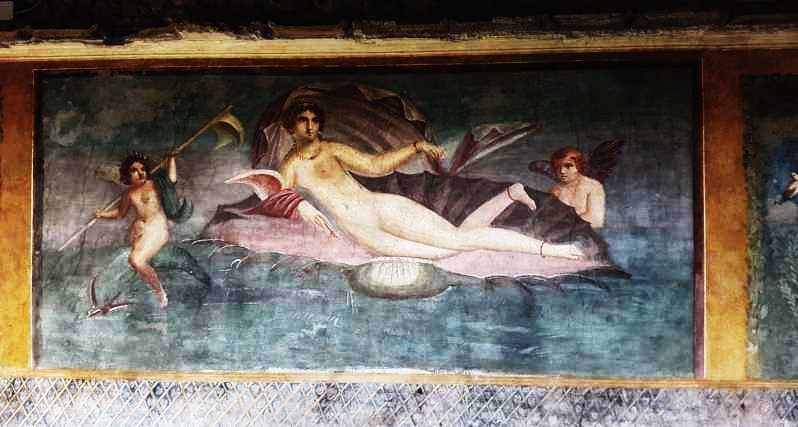
Who was Campaspe?
The history of Campaspe dates back to ancient Greece and is related to the famous Greek military and conqueror Alexander the Great, also known as Alexander III of Macedonia. The history of Campaspe is based on stories and legends, and has been portrayed in various literary and artistic works throughout history.
According to legend, Campaspe was a beautiful woman from Thessaly, in Greece, and she was considered one of the most beautiful in the world at her time. It is said that Alexander the Great saw her and was immediately captivated by her beauty. The painter Apelles, who worked for Alexander the Great, was commissioned to paint a portrait of Campaspe. The portrait is called Venus Anadyomene
Jacques-Louis David. Apelles paints Campaspe in the presence of Alexander the Great
Palais des Beaux-Arts de Lille
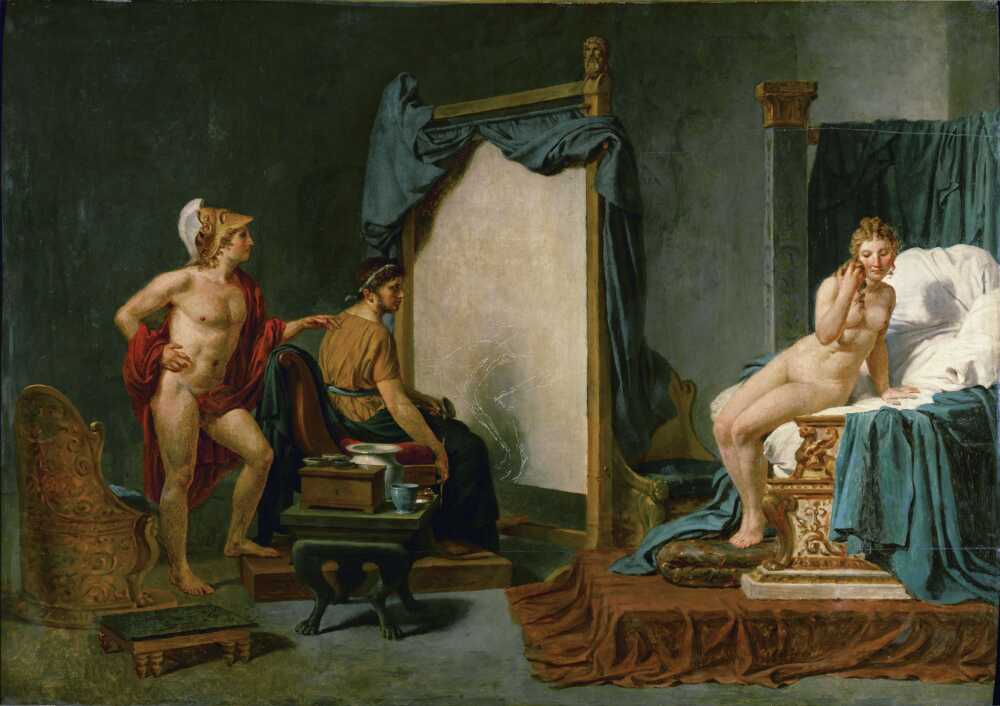
As Apelles spent time with Campaspe to capture her beauty on canvas, he fell deeply in love with her. According to Pliny the Elder, when Alexander saw the finished nude, he concluded that Apelles surely loved the young woman more than he did; so he gave Campaspe to him as his wife and kept the work.
The history of Campaspe has been portrayed in different works of art and literature throughout the centuries. One of the best known examples is the play “The History of Alexander” written by the English playwright Thomas Heywood in the 17th century.
Who was Phryne?
Frine, also known as Phryne, was a famous courtesan (hetaira) in ancient Greece during the 4th century BC. She was renowned for her beauty, charm, and intelligence. Frine was born in Thespiae, Boeotia, and later moved to Athens.
Frine’s reputation as a courtesan brought her into contact with influential figures of the time, including politicians and artists. She became particularly famous for her relationships with prominent individuals, such as the orator Hypereides and the sculptor Praxiteles.
Henryk Siemiradzki. Phryné prepares to bathe on the beach of Eleusis. 1889.
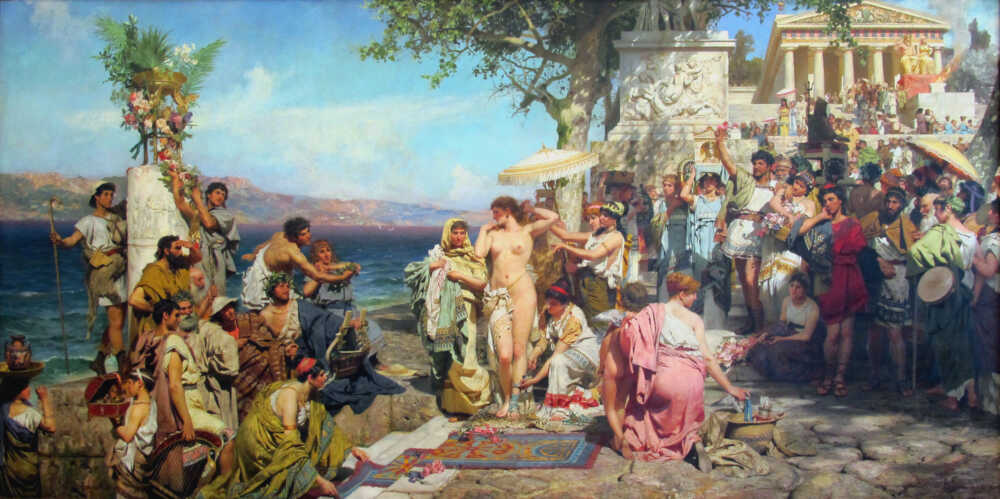
One famous story involving Frine is her trial for impiety. It is said that she was accused of blasphemy, but her defense lawyer, Hypereides, famously removed her robe in court, revealing her beauty and causing a sensation among the jurors. Her beauty and the emotional reaction it provoked reportedly swayed the jury, resulting in her acquittal.
Frine’s life and beauty made her a subject of fascination and inspiration for artists, writers, and philosophers of the time. She was frequently depicted in artwork, and her story has been referenced in various literary works throughout history.
Phryne The Muse of Artists
It is said that Phryné was a muse for various artists of the time, who were inspired by her figure to create works of art. Two of the most notable cases are the following:
The Greek Sculptor Praxiteles: Praxiteles was famous for creating a statue of Aphrodite (the goddess of love and beauty) using Phryne as a model. The statue, known as the “Aphrodite of Knidos”, became one of the masterpieces of Greek sculpture. Phryné posed nude for this iconic portrayal of feminine beauty.
Jean-Léon Gerôme. Praxiteles undresses Phryne before the Areopagus. 1861
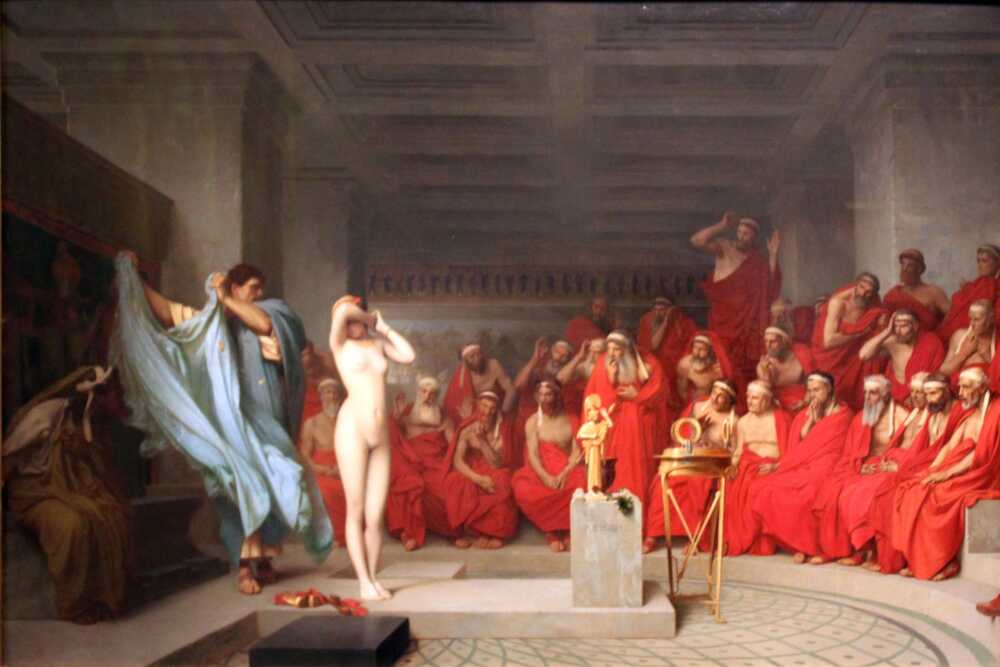
The Greek painter Apelles: Apelles, considered one of the greatest painters of ancient Greece, was also inspired by Phryne to create his works. According to legend, Apelles painted a picture of a nude Phryne underwater, known as Venus Anadyomene. This painting stood out for its realism and captured the beauty and sensuality of Phryné.
Samsung Store: Galaxy Z Fold4
Venus Anadyomene in Art
Botticelli – Lombardo – Titian – Ingres – Godward – Cabanel. – Bouguereau. – de Vos. – Poussin
The Venus Anadyomene of Botticcelli
Who was Sandro Botticelli?
Alessandro di Mariano di Vanni Filipepi, nicknamed Sandro Botticelli – Florence, 1445-1510 – , was the favorite painter of the Court of Lorenzo de’ Medici, at a time of fundamental importance for the flourishing of the arts in Florence in the fifteenth century, known like the Florentine Golden Age.
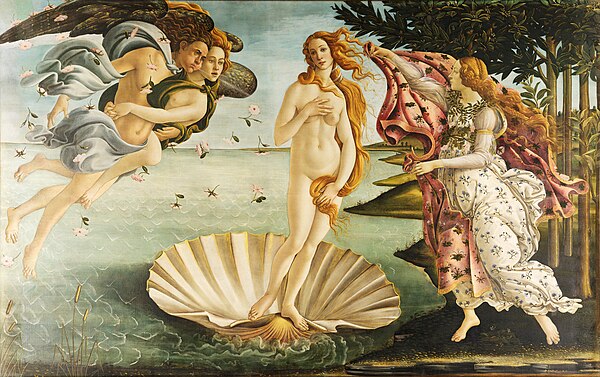
What are the Frescoes of Sandro Botticelli?
In 1481 he was called to Rome to work on the decoration of the Sistine Chapel in the Vatican, where he painted the frescoes The Trials of Moses, The Punishment of the Rebels, and The Temptation of Christ. In the 1490s, after the expulsion of the Medici from Florence, and when the Dominican monk Girolamo Savonarola preached austerity and reform, he suffered a religious crisis, although he did not leave the city.
Botticelli Art Print on Demand on Etsy
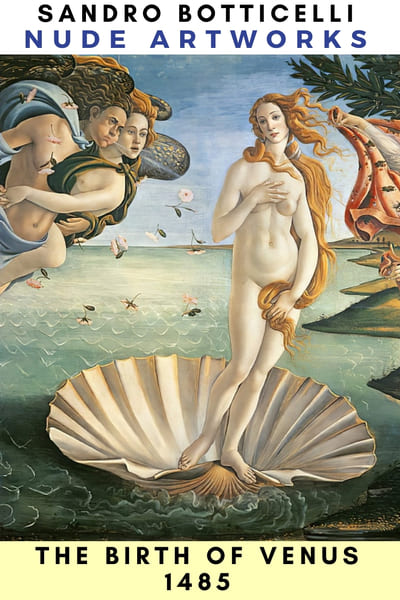
Venus Anadyomene of Ingres
Venus Anadyomene by Jean-Auguste-Dominique Ingres
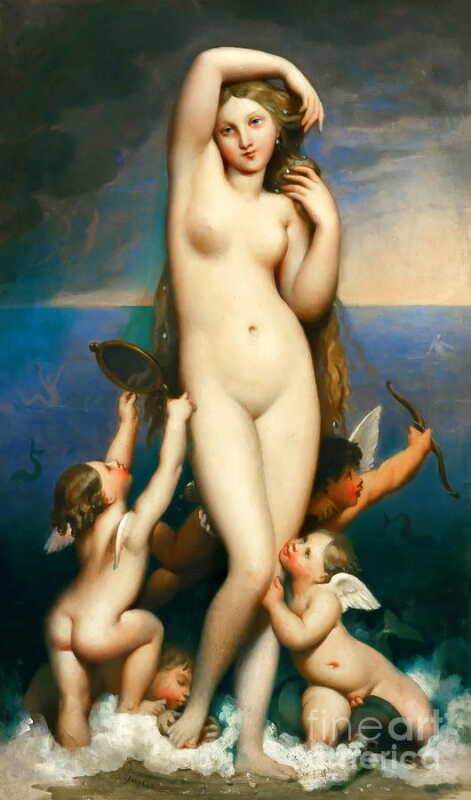
Dominique Ingres, often known as Jean-Auguste-Dominique Ingres, was a renowned French Neoclassical painter born on August 29, 1780, in Montauban, France. He is widely considered one of the most important figures in the history of 19th-century art.
Ingres was known for his meticulous and highly skilled approach to painting, combining precise draftsmanship with a keen sense of detail and anatomy. He began his artistic training at the age of 11 and later studied at the prestigious École des Beaux-Arts in Paris.
Ingres became a prominent portraitist and gained recognition for his ability to capture the likeness and character of his sitters. His portraits often exuded a sense of elegance and idealized beauty. Some of his most famous portraits include:
- “Napoleon I on His Imperial Throne” (also known as Ingres’s Napoleon): This grand portrait depicts Napoleon Bonaparte in his coronation robes, conveying his power and majesty.
- “Madame Moitessier”: In this portrait, Ingres portrays the wife of a wealthy banker, Marie-Clotilde-Inès Moitessier. The painting is admired for its refinement, exquisite rendering of fabrics, and the enigmatic expression of Madame Moitessier.
- “The Turkish Bath” (also known as “The Great Odalisque”): This work exemplifies Ingres’s interest in exoticism and Orientalist themes. It depicts a harem scene with a reclining female nude, showcasing his ability to combine sensuality with meticulous detail.
-
“La Grande Odalisque”: Another famous depiction of a reclining female nude, this painting caused controversy at the time for its elongated proportions and departure from traditional anatomical accuracy.
Pollice Verso – Ingres
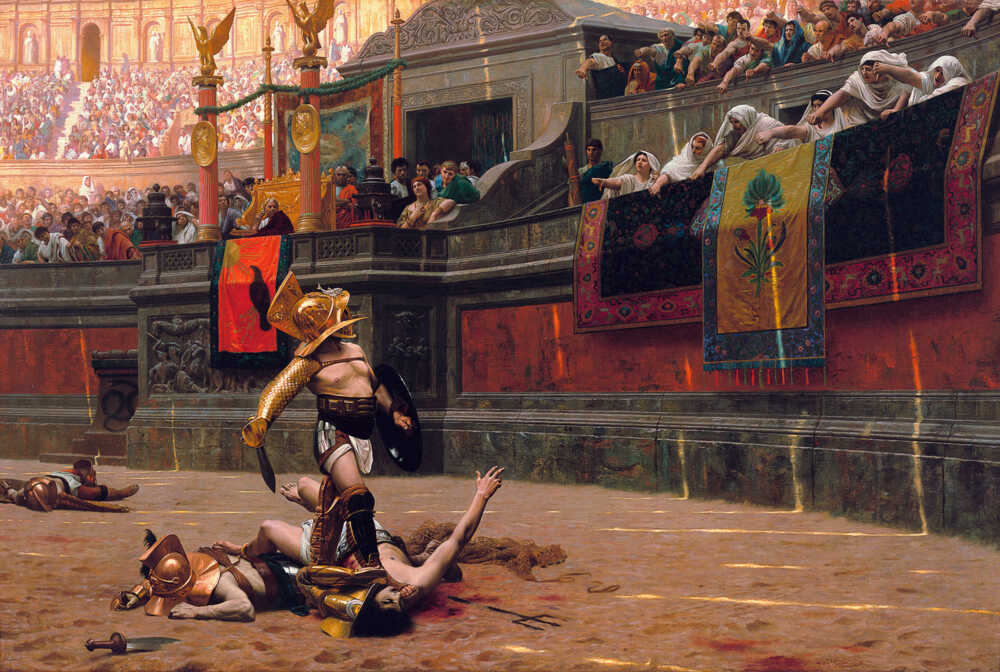
The Venus Anadyomene of Titian
Venus Anadyomena by Titian 1525, (National Gallery of Scotland, Edinburgh).
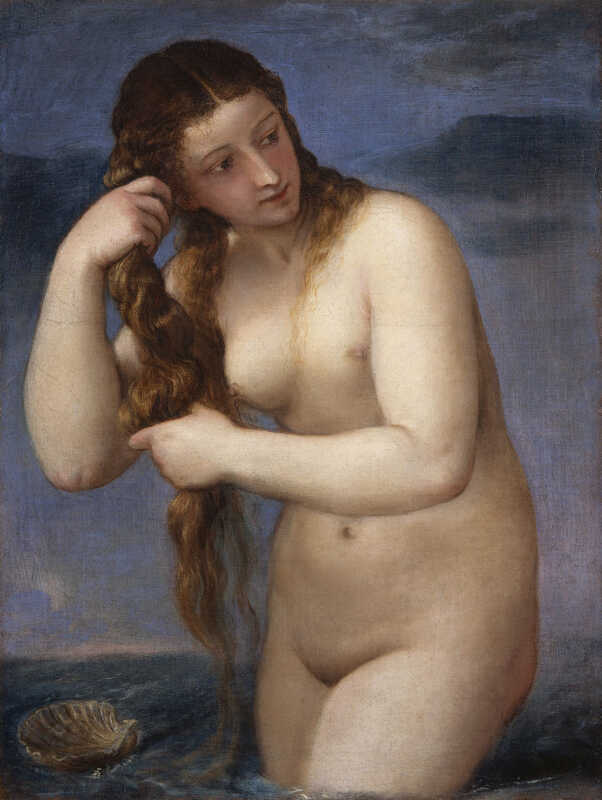
Alexandre Cabanel
The Birth of Venus by Alexandre Cabanel, 1863 (Orsay Museum, Paris).
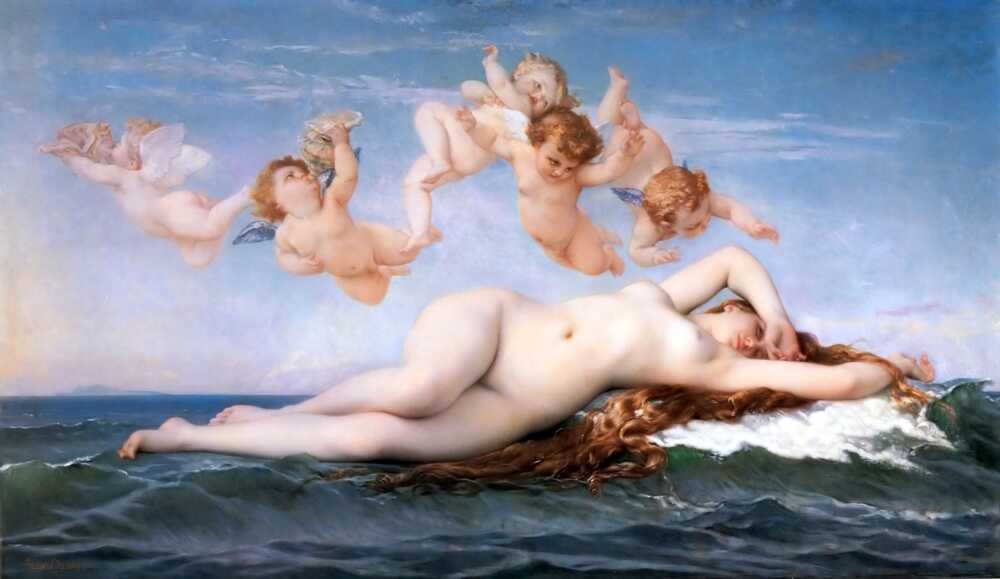
William-Adolphe Bouguereau
The Birth of Venus, by William-Adolphe Bouguereau, c. 1879
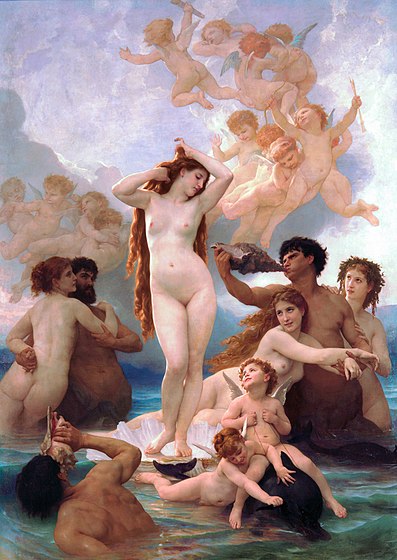
Museo Nacional del Prado
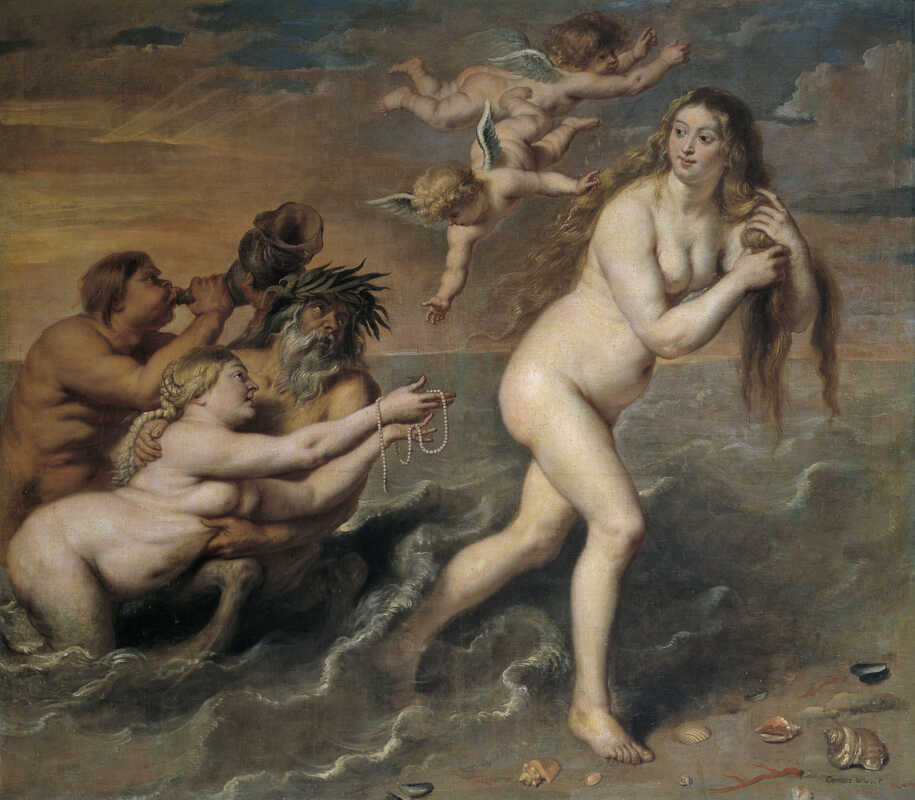
Nicolas Poussin (1594–1665)
Cornelis de Vos
: The Birth of Venus
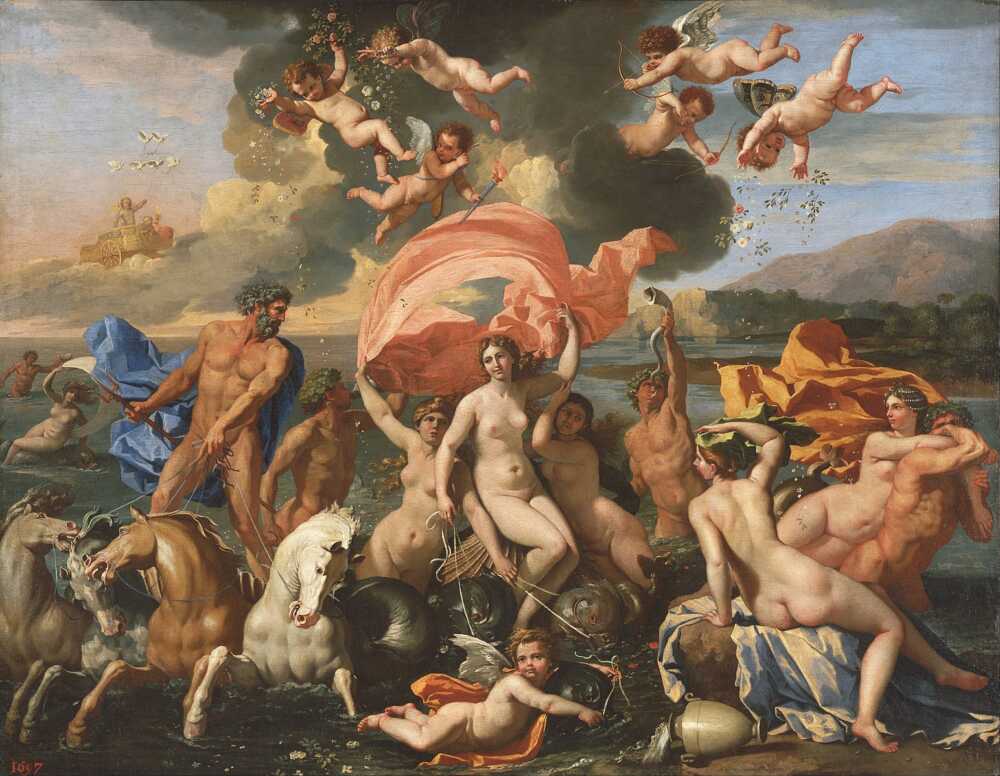
Venus Anadyomene of Antonio Lombardo
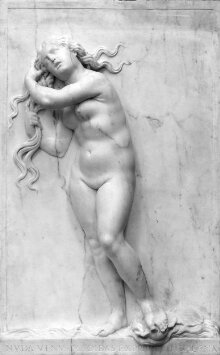
Venus Binding her Hair, 1897 – John William Godward
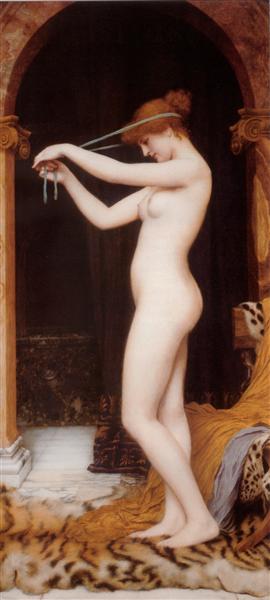
Related Links
Amazon Poster <ancient Painting










